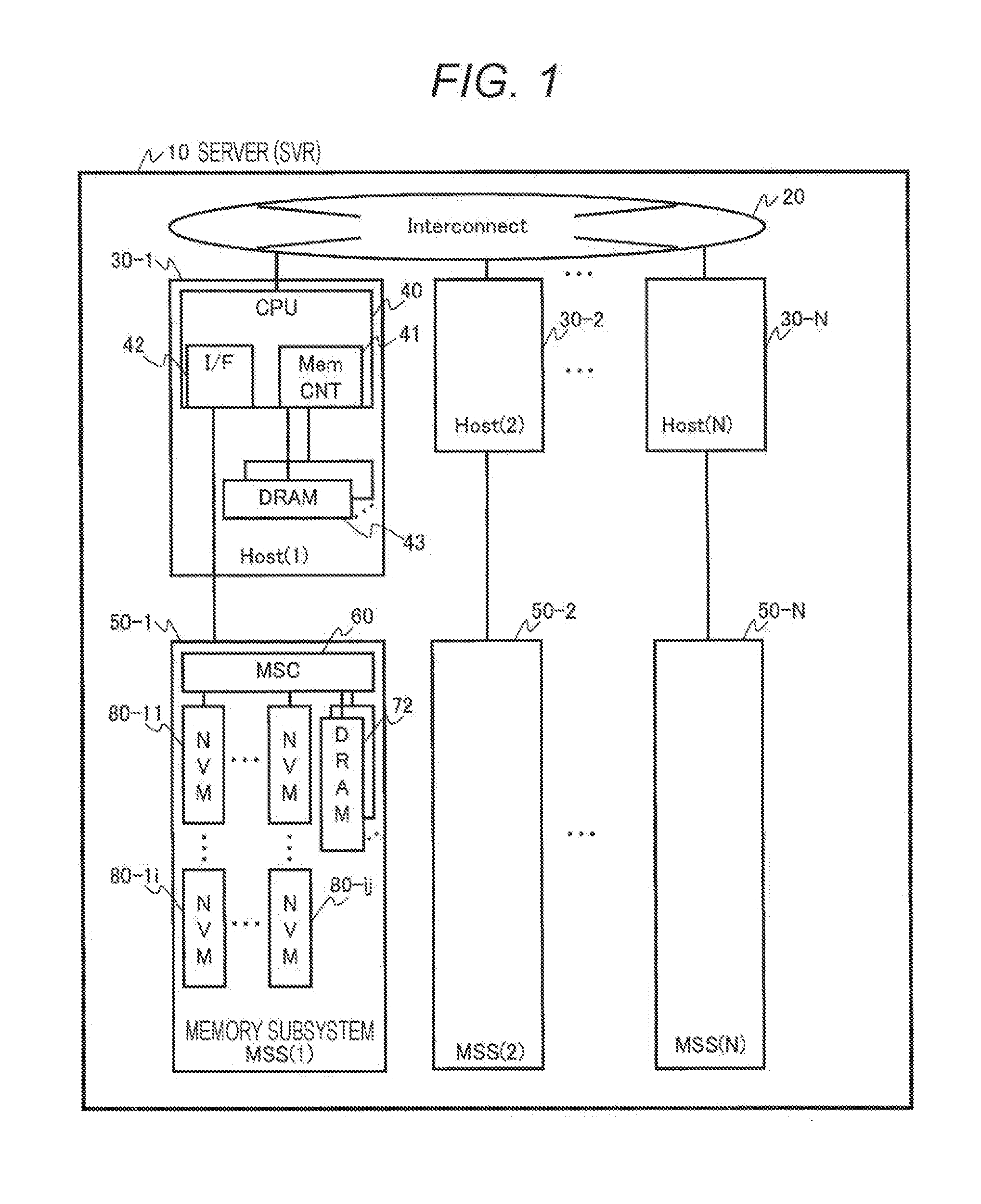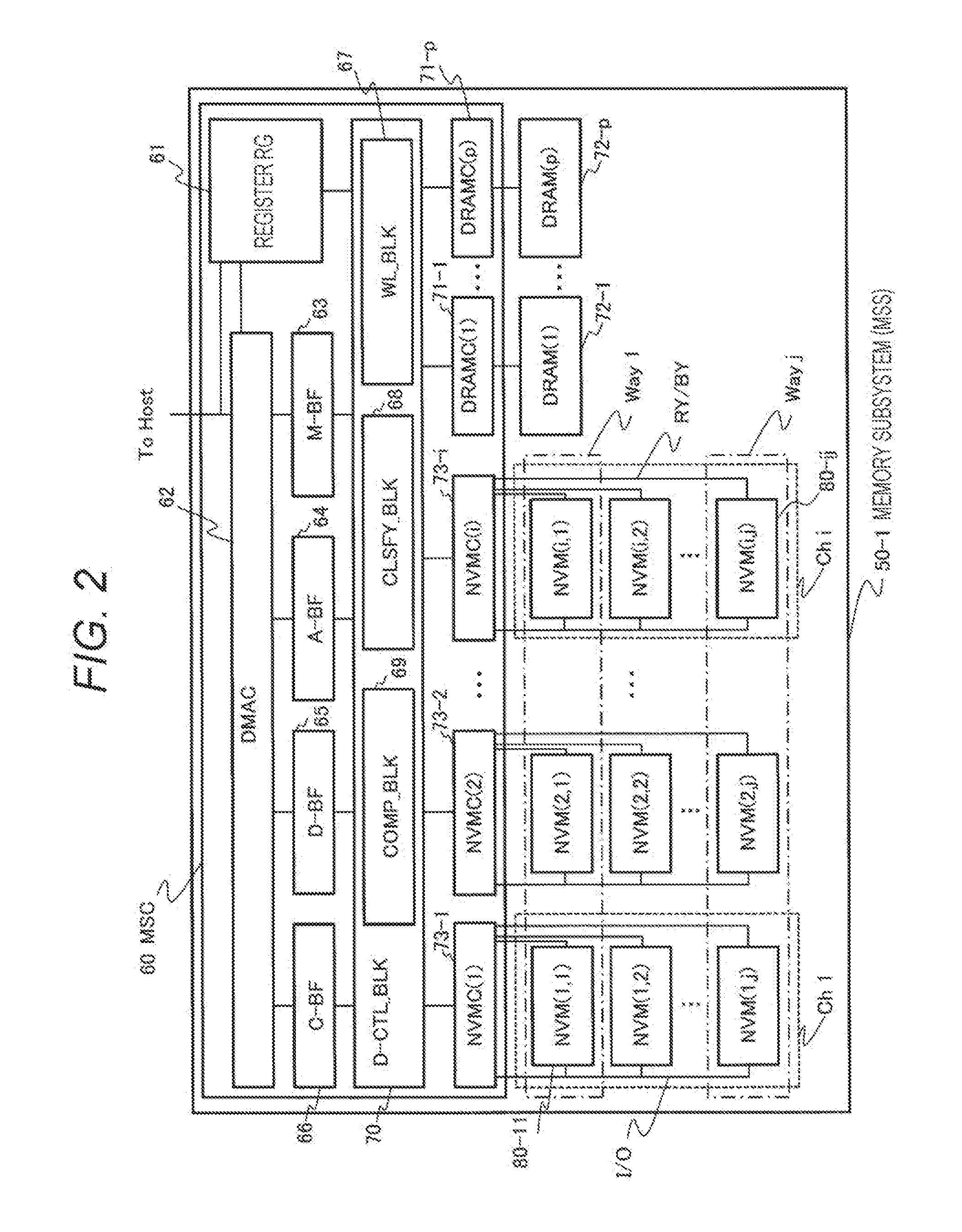Information processing device
- Summary
- Abstract
- Description
- Claims
- Application Information
AI Technical Summary
Benefits of technology
Problems solved by technology
Method used
Image
Examples
example 1
A. Configuration of Server
[0037]First, a configuration of a server (SVR) 10 will be described with FIGS. 1 and 2. FIG. 1 is a block diagram illustrating an overall configuration of the server (information processing apparatus) 10 to perform information processing.
[0038]The server (SVR) 10 includes a plurality of hosts (Host (1) 30-1 to Host (N) 30-N) to perform arithmetic processing, interconnect 20 connecting all of the hosts 30-1 to 30-N with each other, and a plurality of memory subsystems (MSS (1) to MSS (N)) 50-1 to 50-N connected to hosts 30-1 to 30-N thereof. Incidentally, the hosts 30-1 to 30-N are collectively denoted with a symbol 30 in the descriptions below. This similarly applies to other elements with a symbol without “-” collectively representing elements and a symbol added with “-” representing an individual element.
[0039]The host 30 includes an arithmetic module (CPU) 40 to perform arithmetic processing and one or more memories (DRAM) 43 connected to a memory contro...
example 2
[0120]The example 1 illustrates an example where the memory subsystem control module (MSC) 60 stores the data of the write request to the nonvolatile memory 80 in an uncompressed manner; however, the present example 2 illustrates an example of compressing data.
[0121]FIG. 11 is a block diagram illustrating exemplary correspondence relation among a chip, a block, and a page of a nonvolatile memory and a group of compressed data of the example 2. A DRAM 72 stores, in addition to the tables illustrated in the example 1, buffers 720-1 to 720-M for groups (1 to M), respectively, and a DRAM buffer management table 140. Other configurations are similar to those of the example 1 and thus overlapping descriptions thereon are omitted.
[0122]The buffers 720-1 to 720-M are storage areas to temporarily store compressed data by each of the groups 1 to M after a memory subsystem control module (MSC) 60 compresses data to write having received from a host 30.
[0123]The DRAM buffer management table 140...
example 3
[0150]FIGS. 15 to 18 illustrate an example 3 where a last writing block management table 150 is added to the configuration of the example 1 and a writing destination is selected upon writing data to the memory subsystem 50.
[0151]First, overall processing will be described with FIG. 15. FIG. 15 is a block diagram illustrating exemplary correspondence relation among a chip and a block in a nonvolatile memory and a stored data type.
[0152]Together with a write request and data, a type of data (graph data (CSR), analysis result (MSG), vertex information (VAL), etc.) is notified from the host 30 to a memory subsystem control module (MSC) 60. The memory subsystem control module (MSC) 60 changes a method of selecting a writing destination of the data based on the type of the data received.
[0153]In the example where graph data (CSR) is not updated until termination of graph processing as illustrated in FIG. 5 of the example 1, the graph data is not updated during the graph processing but an ...
PUM
 Login to View More
Login to View More Abstract
Description
Claims
Application Information
 Login to View More
Login to View More - R&D
- Intellectual Property
- Life Sciences
- Materials
- Tech Scout
- Unparalleled Data Quality
- Higher Quality Content
- 60% Fewer Hallucinations
Browse by: Latest US Patents, China's latest patents, Technical Efficacy Thesaurus, Application Domain, Technology Topic, Popular Technical Reports.
© 2025 PatSnap. All rights reserved.Legal|Privacy policy|Modern Slavery Act Transparency Statement|Sitemap|About US| Contact US: help@patsnap.com



